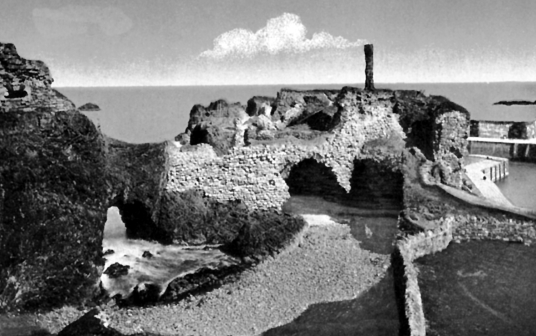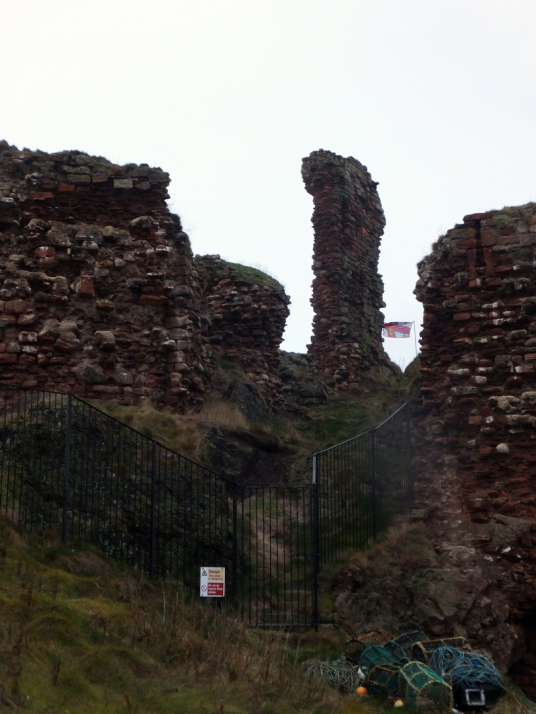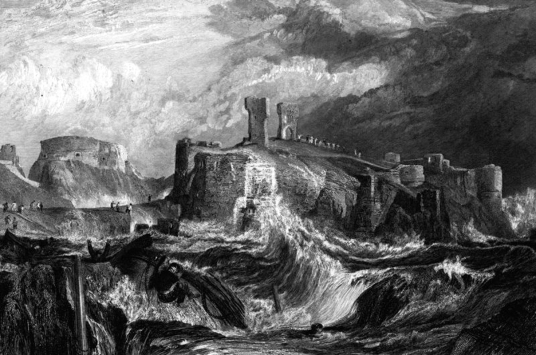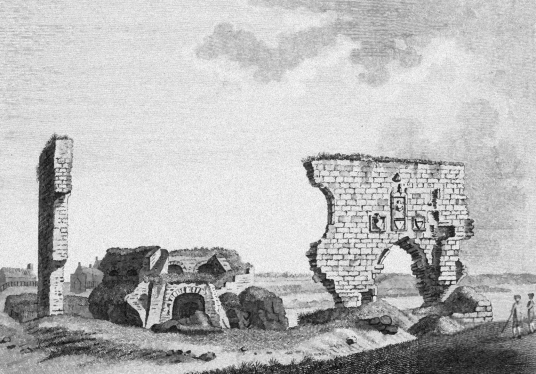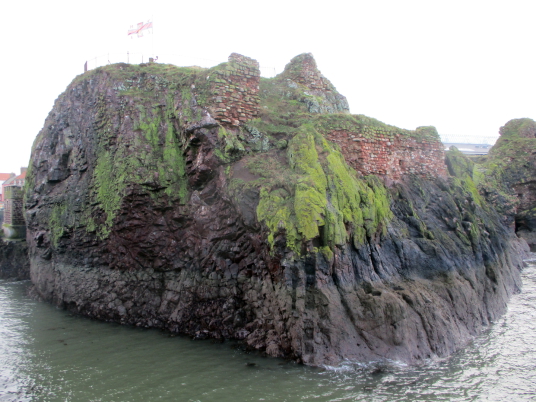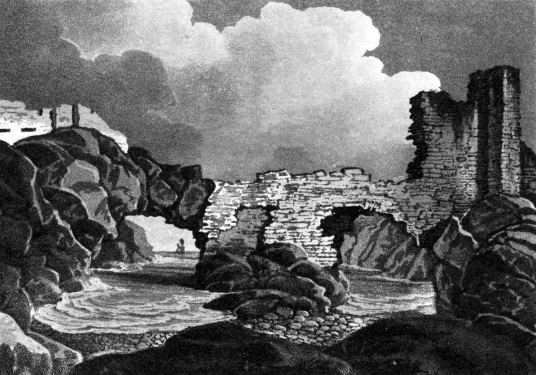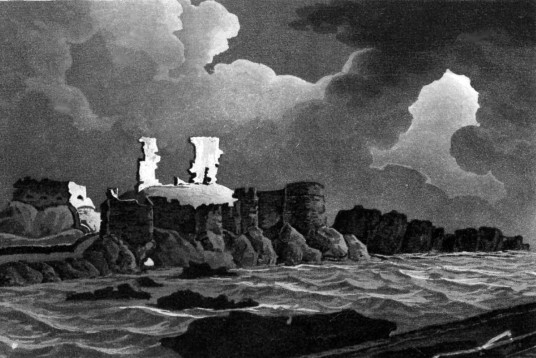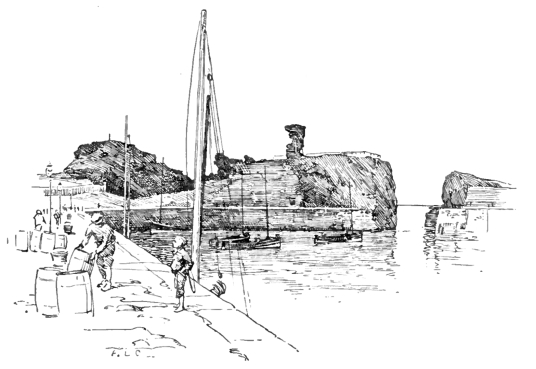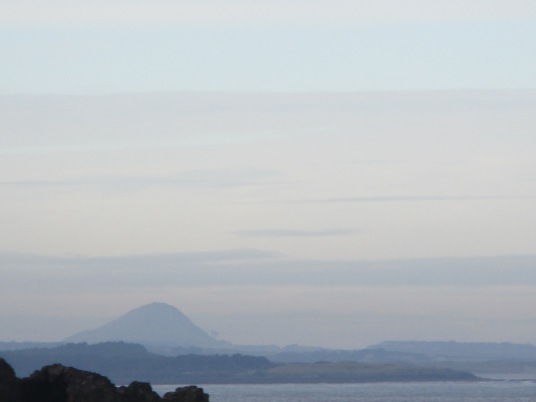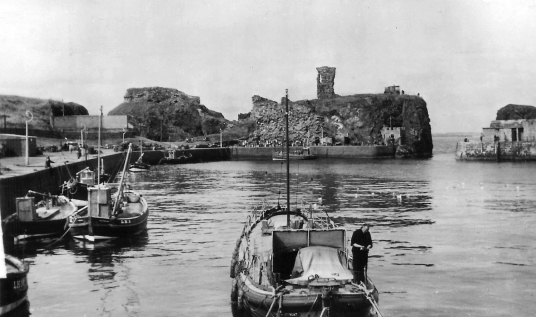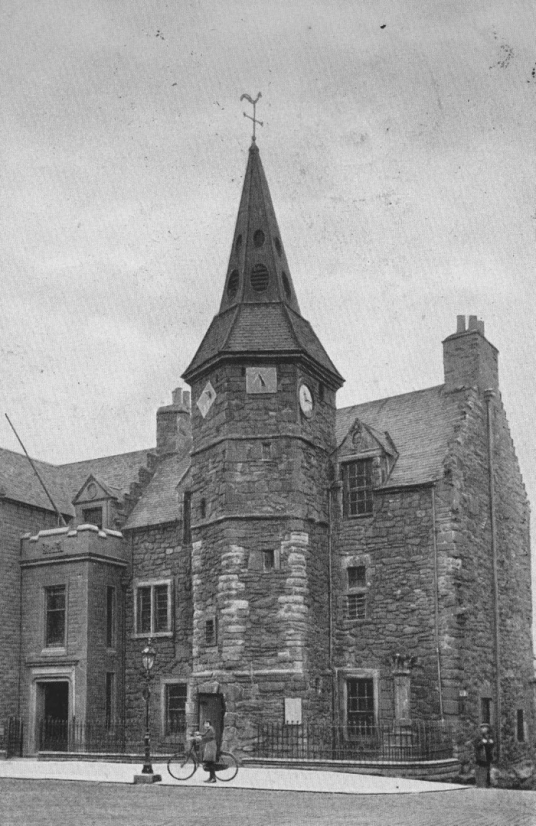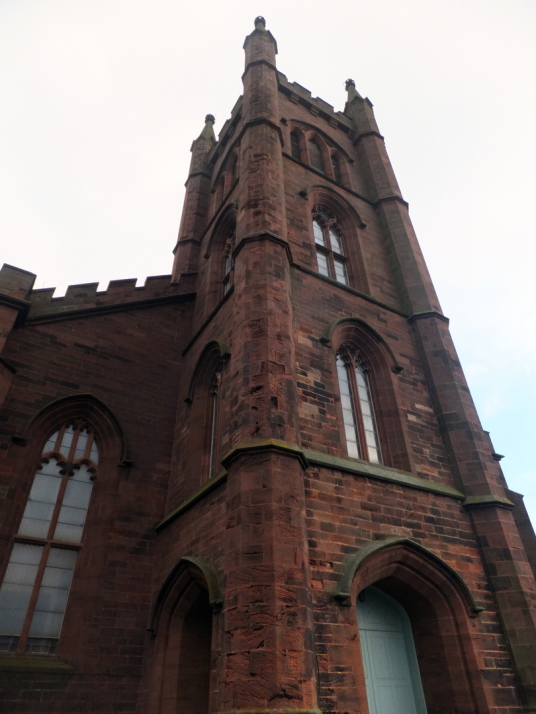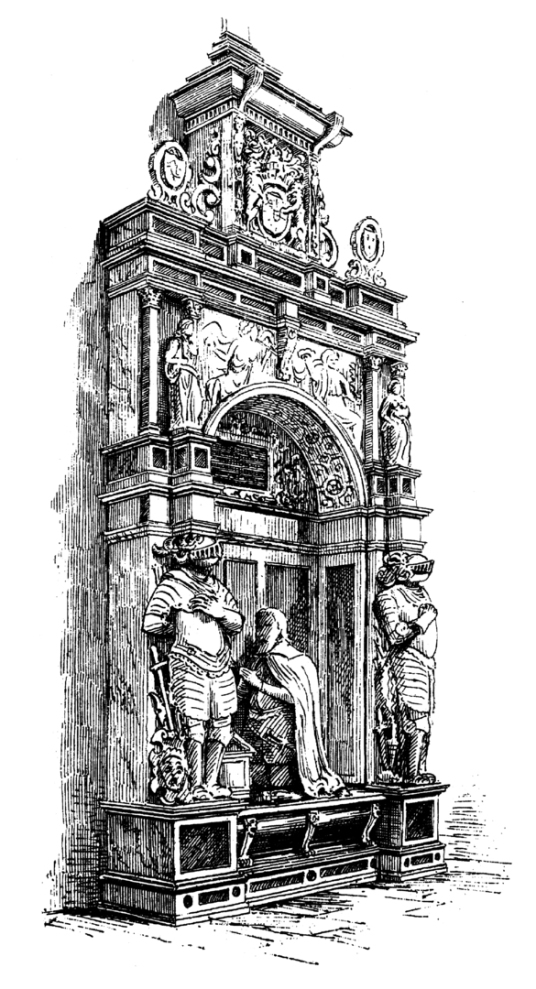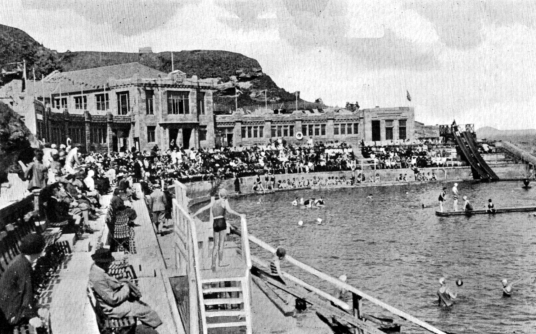Dunbar Castle
Dunbar Castle is a very fragmentary but picturesque ruin, once a strong fortress, by the harbour in the East Lothian town of Dunbar in south-east Scotland, and associated with Mary, Queen of Scots.
Lothians: In Dunbar, on minor road north of A1087, on north shore just west of harbour, at Dunbar Castle.
Ruin or site NT 678794 OS: 67
OPEN: Castle and harbour: access at all reasonable times – view from exterior as care should be taken as dangerously ruined, especially during bad weather. There are fine coastal walks.
Town House Museum and Gallery: open Apr-Sep, daily 13.00-17.00; winter, Sat & Sun only, 14.00-16.00. Community room to rent.
Dunbar Parish Church: only open for services: view from exterior.
Although once one of the most important castles in Scotland, little remains of Dunbar Castle, except an upstand and foundations of a very ruined tower and courtyard, as well as a blockhouse. The ruins date in part from the 12th century, although there was a stronghold here from at least the 9th century.
The castle stands in a fine location by the harbour of the burgh, and ‘Dunbar’ is prominently marked on Blaeu’s map of The Lothians. The burgh is also shown on Adair’s map of East Lothian, and although the castle is marked it is given little prominence.
The Cospatrick Earls of Dunbar held the castle in the 13th century, but it was captured by the English in 1297. Edward II sheltered here after defeat at the Battle of Bannockburn in 1314 before sailing to Berwick upon Tweed. Black Agnes, Countess of Douglas and the daughter of Sir Thomas Randolph, held the castle successfully for six weeks in 1338 against English armies, using a giant catapult against the besiegers’ stone-hurling mangonels. She reputedly said after the battle, as the English fled: ‘behold of the litter of English pigs’.
The 11th Earl of Dunbar was forfeited for treason, and the castle was slighted in 1488, but later rebuilt by James IV. In 1489 the ships of Sir Andrew Wood defeated an English navy just off Dunbar.
The castle passed to the Duke of Albany, who remodelled the castle for artillery about 1515, but it was burned by the English in 1548. Further fortifications were added by the French in 1550, but destroyed under the terms of the Treaty of Leith.
In 1566, two days after David Rizzio's murder, Mary, Queen of Scots, and Henry Stewart, Lord Darnley, arrived here – although he had been involved in the murder. In 1567, ten weeks after Darnley was himself murdered, Mary was brought here after being abducted by James Hepburn, 4th Earl of Bothwell, who was the keeper of the castle. She later married him.
The castle surrendered and was destroyed after Mary had fled to England. Much of the ruin was demolished in the 19th century to build the harbour. The remains of the castle are very fragmentary, and continue to deteriorate. There are impressive vaults by the harbour.
There was a harbour here from the days of the castle, but this was improved in the 17th and 18th centuries, including repairs paid for by Cromwell after storm damage. The older harbour is to the east of the Victoria Harbour, which was built in 1842.
In 1781 an artillery battery was constructed to defend the harbour and burgh from American privateers and invasion by the French, and interesting remains of the fort survive on Lamer Island. The building was later used as a hospital but eventually fell ruinous, but has been renovated with information panels and their are fine views from the walls.
A ghost, known as Black Aggie, is said to have been witnessed in the area, although the apparition is reputedly only seen on clear nights. This is reported to be the apparition of Black Agnes mentioned above, although Agnes lived into her 60s and died elsewhere, and it is not clear why she would haunt here…
Dunbar is an attractive seaside town, and was made a royal burgh in 1370. On the long High Stree, is the Town House (town hall). This fine harled building rises to three storeys with a steep-pitched roof and a stair tower crowned by a distinctive pointy roof with a bell, clock and sundials. The building dates from the early 17th century, possibly incorporating older parts, and was used by the town council and housed a court and cell, later being used as a police station. The building is now a museum and gallery.
The mercat cross, rebuilt from fragments and probably dating from the 16th century, is by the town house. There is a statue of John Muir, the famous conservationist who was born in Dunbar, outside the building.
The imposing and stark parish church is located in a prominent spot, and has a large graveyard with many old memorials. The present building dates from the 19th century but stands on an ancient site, and the older building was established as a collegiate church in 1342. It was rebuilt in the 18th century, then again in the following century and was extended with aisles later still. Preserved in the church is the remarkable carved memorial to George Home, Earl of Dunbar, High Treasurer of Scotland (also see Spott House).
The town was a very popular holiday resort and had the largest outside pool in Scotland, along with a pavillion, but this was completely demolished in the 1980s, when the present indoor pool was built, and virtually nothing remains, which is a great shame.


